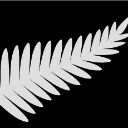- Home
- /
- Programming
- /
- Programming
- /
- Altering a do loop to make unequal intervals
- RSS Feed
- Mark Topic as New
- Mark Topic as Read
- Float this Topic for Current User
- Bookmark
- Subscribe
- Mute
- Printer Friendly Page
- Mark as New
- Bookmark
- Subscribe
- Mute
- RSS Feed
- Permalink
- Report Inappropriate Content
Hello All,
I am using SAS 9.4.
I worked with a more SAS savvy person than myself on this code and I need to make a few changes to the do loop. I am having a problem changing the %do loop in blue in the following code.
I want to change the incident variable in %do loop.
Currently, incident = 1 if an event occurs within a specific 365.25 period after visitdate.
incident=(%eval(&i-1)*365.25<=(&outcome-visitdate)<&i*365.25); where i=1 to 10
I need to change this to only do
incident=(0*365.25<=(&outcome-visitdate)<4*365.25);
incident=(4*365.25<=(&outcome-visitdate)<7*365.25);
incident=(7*365.25<=(&outcome-visitdate)<10*365.25);
__________________________________
%let outcome=event; /*date variable*/
/*transpose data set from wide to long*/
%macro outcome;
data second;
set first;
array fox {*} fox1 fox2 fox3 fox4;
array rabbit {*} rabbit1 rabbit2 rabbit3 rabbit4;
array dog {*} dog1 dog2 dog3 dog4;
array date{*} date1 date2 date3 date4;
do i=1 to dim(fox);
visit=i+2;
foxvar=fox(i);
rabbitvar=rabbit(i);
dogvar=dog(i);
visitdate=date(i);
if ^(&outcome=.) then output;
end;
run;
%do i=1 %to 10;
/* INCIDENT=0 prior to the event, */
/* 1 at the event, missing otherwise(after event occurred) */
data second;
set second;
by id visit;
drop switch;
retain switch;
if first. id then switch=0;
if switch=1 then incident=.;
if ^missing(&outcome) and ^missing(&outcome) and switch=0 then do;
incident=(%eval(&i-1)*365.25<=(&outcome-visitdate)<&i*365.25);
end;
if incident=1 then switch=1;
run;
%end;
...
%mend;
%outcome;
There is more to the macro code as it drops the ID in the following period after it has had the event in the current interval.
________________________________________
I have tried without success the following 2 strategies
...
%do i=1 %to 9;
data second;
set second;
...
when i = 1 do;
incident=0*365.25<=(&outcome-visitdate)<4*365.25);
end;
when i=4 do;
incident=4*365.25<=(&outcome-visitdate)<7*365.25);
end;
when i=7 do;
incident=7*365.25<=(&outcome-visitdate)<9*365.25);
end;
when i=2 or i=3 or i=5 or i=6 or i=8 or i=9 do incident = 0;
and also
...
%do i={0,4 7};
%do j={4 7 9};
data second;
set second;
...
incident=(%eval(&i)*365.25<=(&outcome-visitdate)<(&j)*365.25);
__________
Any help would be appreciated!!
- Mark as New
- Bookmark
- Subscribe
- Mute
- RSS Feed
- Permalink
- Report Inappropriate Content
Like this?
%do i=1 %to 3;
/* INCIDENT=0 prior to the event, */
/* 1 at the event, missing otherwise(after event occurred) */
data second;
set second;
by id visit;
drop switch;
retain switch;
if first. id then switch=0;
if switch=1 then incident=.;
if ^missing(&outcome) and switch=0 then do;
if &i=1 then incident=(0*365.25<=(&outcome-visitdate)<4*365.25);
if &i=2 then incident=(4*365.25<=(&outcome-visitdate)<7*365.25);
if &i=3 then incident=(7*365.25<=(&outcome-visitdate)<10*365.25);
end;
if incident=1 then switch=1;
run;
%end;
Please align your code better. Tabs prevent that. Use spaces.
- Mark as New
- Bookmark
- Subscribe
- Mute
- RSS Feed
- Permalink
- Report Inappropriate Content
I tried this and incident only has 1 level (0 and missing). which is odd because there are instances where incident should be 1.
- Mark as New
- Bookmark
- Subscribe
- Mute
- RSS Feed
- Permalink
- Report Inappropriate Content
Why are you running the same DATA step inside a macro %DO loop?
What is the purpose?
Why do you want to change
incident=(0*365.25<=(&outcome-visitdate)<1*365.25);
incident=(1*365.25<=(&outcome-visitdate)<2*365.25);
incident=(2*365.25<=(&outcome-visitdate)<3*365.25); to
incident=(0*365.25<=(&outcome-visitdate)<4*365.25);
incident=(4*365.25<=(&outcome-visitdate)<7*365.25);
incident=(7*365.25<=(&outcome-visitdate)<10*365.25); Why is the first interval 4 years and the others only 3? Shouldn't that be:
incident=(0*365.25<=(&outcome-visitdate)<3*365.25);
incident=(3*365.25<=(&outcome-visitdate)<6*365.25);
incident=(6*365.25<=(&outcome-visitdate)<9*365.25); If so then use:
incident=(3*(&i-1)*365.25<=(&outcome-visitdate)<3*&i*365.25);
To implement arbitrary boundaries you could just use a list of the cut points. Just pull the boundaries for the current iteration.
%let cuts=0 4 7 10;
%do i=1 %to %sysfunc(countw(&cuts))-1;
....
incident=(3*%scan(&cuts,&i-1)*365.25<=(&outcome-visitdate)<3*%scan(&cuts,&i)*365.25);
....
%end;
April 27 – 30 | Gaylord Texan | Grapevine, Texas
Registration is open
Walk in ready to learn. Walk out ready to deliver. This is the data and AI conference you can't afford to miss.
Register now and lock in 2025 pricing—just $495!
Learn how use the CAT functions in SAS to join values from multiple variables into a single value.
Find more tutorials on the SAS Users YouTube channel.
SAS Training: Just a Click Away
Ready to level-up your skills? Choose your own adventure.


